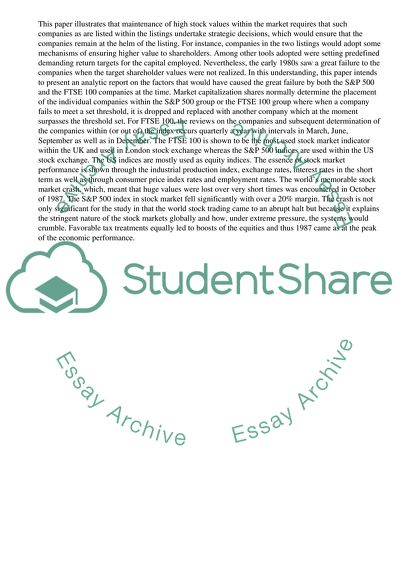Cite this document
(The S&P 500 and the FTSE 100 Groups of Companies Essay, n.d.)
The S&P 500 and the FTSE 100 Groups of Companies Essay. Retrieved from https://studentshare.org/management/1814106-the-pursuit-of-shareholder-value-included-setting-demanding-return-targets-for-capital-employed-which-most-of-the-ftse-100-and-sp500-companies-failed-to-achieve-critically-examine-the-underlying-cause-of-the-failure
The S&P 500 and the FTSE 100 Groups of Companies Essay. Retrieved from https://studentshare.org/management/1814106-the-pursuit-of-shareholder-value-included-setting-demanding-return-targets-for-capital-employed-which-most-of-the-ftse-100-and-sp500-companies-failed-to-achieve-critically-examine-the-underlying-cause-of-the-failure
(The S&P 500 and the FTSE 100 Groups of Companies Essay)
The S&P 500 and the FTSE 100 Groups of Companies Essay. https://studentshare.org/management/1814106-the-pursuit-of-shareholder-value-included-setting-demanding-return-targets-for-capital-employed-which-most-of-the-ftse-100-and-sp500-companies-failed-to-achieve-critically-examine-the-underlying-cause-of-the-failure.
The S&P 500 and the FTSE 100 Groups of Companies Essay. https://studentshare.org/management/1814106-the-pursuit-of-shareholder-value-included-setting-demanding-return-targets-for-capital-employed-which-most-of-the-ftse-100-and-sp500-companies-failed-to-achieve-critically-examine-the-underlying-cause-of-the-failure.
“The S&P 500 and the FTSE 100 Groups of Companies Essay”, n.d. https://studentshare.org/management/1814106-the-pursuit-of-shareholder-value-included-setting-demanding-return-targets-for-capital-employed-which-most-of-the-ftse-100-and-sp500-companies-failed-to-achieve-critically-examine-the-underlying-cause-of-the-failure.


